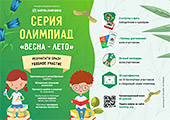Краткосрочное планирование по английскому языку для 5 класса
LESSON PLAN
| Lesson | School: # 33 Of Tselinograd district | ||||||
| Date: | Teacher’s name: Makarova N.S | ||||||
| CLASS: 5 | Number present: | absent: | |||||
| Topic of the lesson | Animals | ||||||
| Learning objectives(s) that this lesson is contributing to | 5.R4 read with some support a limited range of short fiction and non-fiction texts 5.UE9 use simple present and simple past regular and irregular forms to describe routines, habits and states on a limited range of familiar general and curricular topics 5.S6 communicate meaning clearly at sentence level during, pair, group and whole class exchanges | ||||||
| Lesson objectives | All learners will be able to: | ||||||
| name the animals they know learn at least 3 new words from animal related vocabulary read and understand main facts about animals | |||||||
| Most learners will be able to: | |||||||
| tell about the animal they read about | |||||||
| Some learners will be able to: | |||||||
| understand most of the language in text about animals use present simple forms accurately in speaking | |||||||
| Language objectives | Use simple present simple tense, new vocabulary | ||||||
| Value links | Value of environment | ||||||
| Cross curricular links link | Biology | ||||||
| ICT skills | Projector or Smart board for presenting a video | ||||||
| Previous learning | Not necessary | ||||||
| Plan | |||||||
| Planned timings | Planned activities | Resources | |||||
| 10 min | Organization moment Good morning pupils! What date is it today? What is the weather today? I want you to tell me how do you feel in the beginning of the lesson. Look at the whiteboard and choose a smile that describes your feelings. Warm-up Teacher presents the topic of the lesson by using a rebus. Pupils guess the rebus and name the topic. After that the teacher offers to play the game “The last man standing” with the aim of checking pupils’ knowledge in this topic. Student say a name of one animal one by one, who can’t say a word sits on the chair. | PPT | |||||
| Middle 25 min | Presentation Teacher presents types of animals: mammals, reptiles, birds; farm animals, wild animals Group dividing The teacher divides students into 2 groups by using a pictures of animals. Group work Task 1 Teacher distributes the handout with animal flashcards and asks learners to match words to the pictures in pairs. (Differentiation by support, more able learners with learners who need support). Learners should swap their works with other groups and check each other’s matching worksheets with a teacher’s support. Teacher checks answers as an open-class activity. Teacher focuses on pronunciation and spelling the words correctly. (Peer based assessment) Physical training Pupils sing a song and mime the actions. Task 3 Teacher handouts the text about 2 animals. Each group should make an animal fact file. Teacher gives worksheets with new words before, so that student can read the text without teacher’s support. After that each group chooses 1 or 2 speakers and present the information about their animal in front of the class. Cinquain Students make a sinquain about animals. | Worksheet 1,2,3 PPT Stickers | |||||
| End 5 min | Reflexion Teacher asks some questions about animals. Do you like animals? (Does your friend like animals?) What animals do you know? What animals are wild (domestic)? Do animals help people? Are animals useful? Why? Have you got a pet at home? What pet have you got? Can you describe your pet? | Evaluation worksheet | |||||
| Additional information | |||||||
| Differentiation – how do you plan to give more support? How do you plan to challenge the more able learners? | Assessment – how are you planning to check learners’ learning? | Cross-curricular links | |||||
| More support can be given at the start and in middle of lesson by providing less-able learners with vocabulary in a word list so they can read examples of words seen or heard. Learners who are less confident at telling about the animal are shown questions to answer More-able learners can be encouraged to use more complicated sentences | Monitor learners as they read and make notes about the animals. Which learners have difficulties reading, making notes, and reporting information to group orally? Notice any sentences which are difficult for learners to understand and adapt for a future lesson. Monitor learners as they prepare the fact file about the animal. Help with the vocabulary | Links to the biology: Do they know about the animals form the websites? Check if students have a comfortable class layout to work in groups Learners use computers to locate information, report back to group and record in fact files using some of own words. | |||||
| Reflection Were the lesson objectives/learning objectives realistic? What did the learners learn today? What was the learning atmosphere like? Did my planned differentiation work well? Did I stick to timings? What changes did I make from my plan and why? | Use the space below to reflect on your lesson. Answer the most relevant questions from the box on the left about your lesson. | ||||||
| | |||||||
| Summary evaluation What two things went really well (consider both teaching and learning)? 1: 2: What two things would have improved the lesson (consider both teaching and learning)? 1: 2: What have I learned from this lesson about the class or individuals that will inform my next lesson? | |||||||
ГУ «СШ № 33 Целиноградского района»







